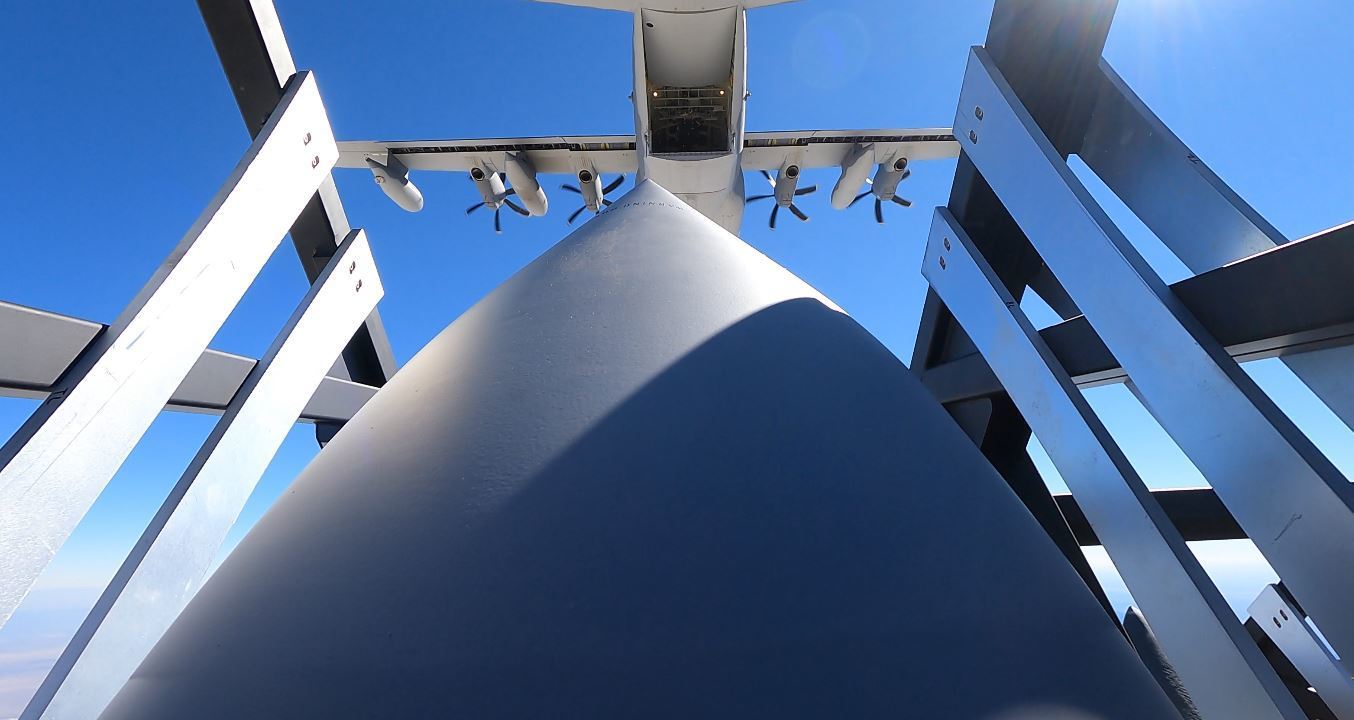

During a multi-nation training exercise in the Pacific this month, the Air Force tested out one of its newest and most unique weapons — a demonstration that Chinese officials likey were paying close attention to.
US forces in the Pacific wrapped up Mobility Guardian 2023 on July 21, a sprawling exercise testing the range and capabilities of some of the Air Force’s largest cargo planes. Sometime during the week, a freighter conducted a test of the Air Force’s Rapid Dragon, a unique system that launches long-range cruise missiles from cargo planes by first dropping them by parachute from the rear of a cargo plane.
Normally, cruise missiles — which can fly to targets hundreds and even thousands of miles away — are only deployed by large bombers like the B-1 or B-52. But with Rapid Dragon, the Air Force’s fleet of normally unarmed and cargo-only C-17s and C-130s might get in the fight.
It’s a capability that Derek Solen, a senior researcher at the U.S. Air Force’s China Aerospace Studies Institute, thinks will catch the attention of China’s military, widely known as the People’s Liberation Army, or PLA.
“[I]n this case, the PLA likely regards Rapid Dragon in particular as a credible threat,” he wrote. “The PLA is likely to regard the seriousness of that threat as significantly greater if Rapid Dragon is shared with American allies.”
Air Force cargo planes are versatile aircraft. They can haul troops, equipment, and can even serve as airborne hospitals. But they are rarely called up to drop bombs or launch missiles — or as Air Mobility Command put it to Aviation Week, conduct “a palletized effects test.”
Subscribe to Task & Purpose Today. Get the latest military news and culture in your inbox daily.
In comments to Aviation Week, Air Mobility commander Gen. Mike Minihan did not mention China by name but made it clear he hoped the test sent a message.
“Now the adversary has an infinitely higher problem to worry about. [They] don’t need to worry just about the bombers, [they] have to worry about this C-130 and every other C-130 on the planet,” Gen. Mike Minihan, the head of Air Mobility Command, told Aerospace Daily. “C-130s can do it. All of our partners and allies fly them, so you can give the adversary an infinite amount of dilemmas that they need to worry about.”
The potential employment of the Rapid Dragon system makes defending airspace that much more complicated because it turns even the humble and prolifically employed C-130 into a cruise missile platform.
“An MC-130J is the perfect aircraft for this capability because we can land and operate from a 3,000-foot highway and austere landing zones whereas a bomber cannot,” said Air Force Lt. Col. Valerie Knight, mission commander of the 352d Special Operations Wing, following a prior demonstration of the Rapid Dragon over Norway in November 2022.
These days, if you see a C-17 or C-130 – or perhaps 24 C-17s taking to the air at the same time – their cargo might be packing a punch.
The latest on Task & Purpose
- Marines fire two Parris Island leaders in charge of recruit training
- ‘They were just being good pilots’ — Inside the Osprey crash that killed 5 Marines
- Court martial begins for Marine drill instructor in ‘Crucible’ death of recruit
- Navy cargo ship runs aground in Bahrain